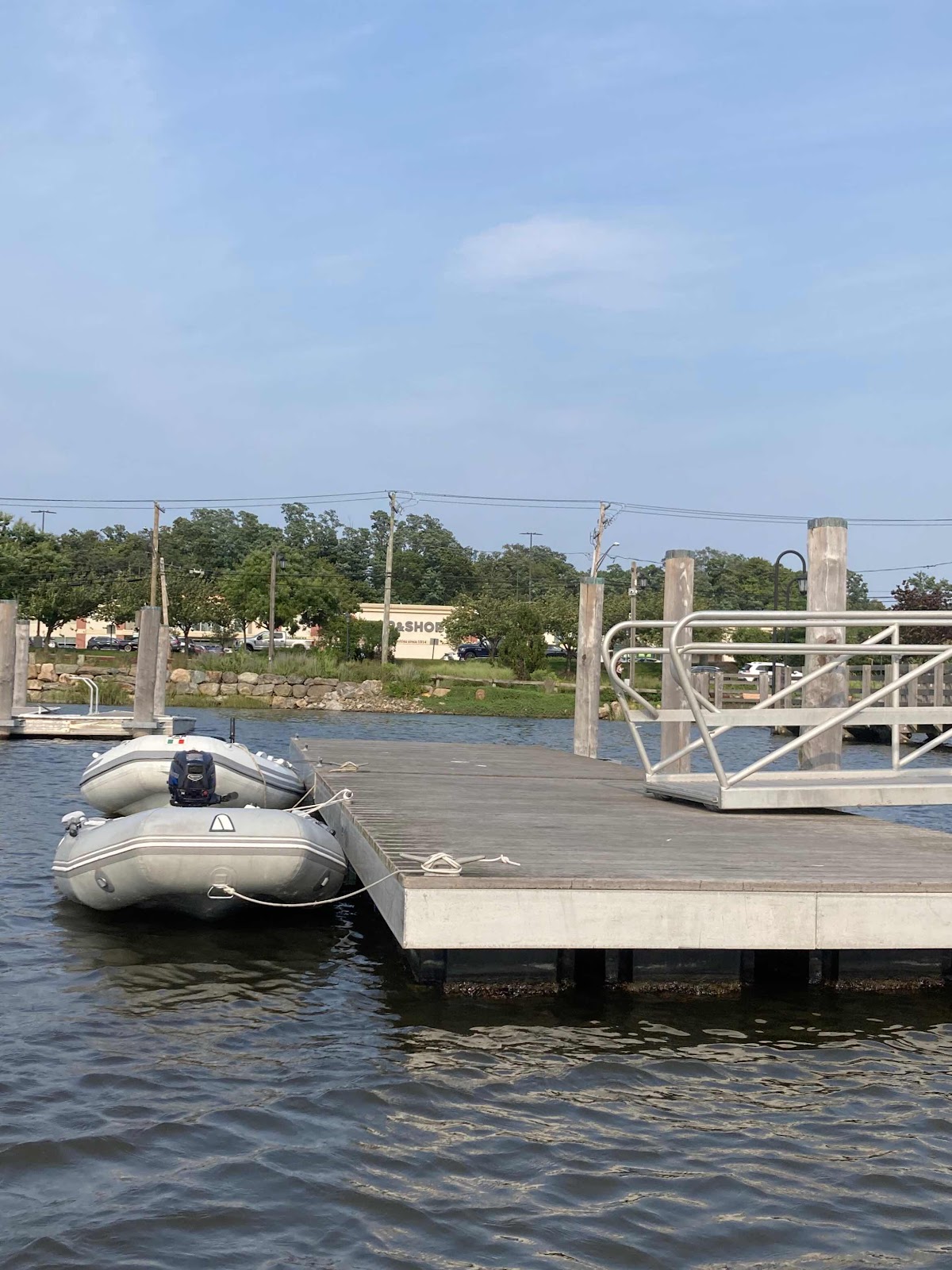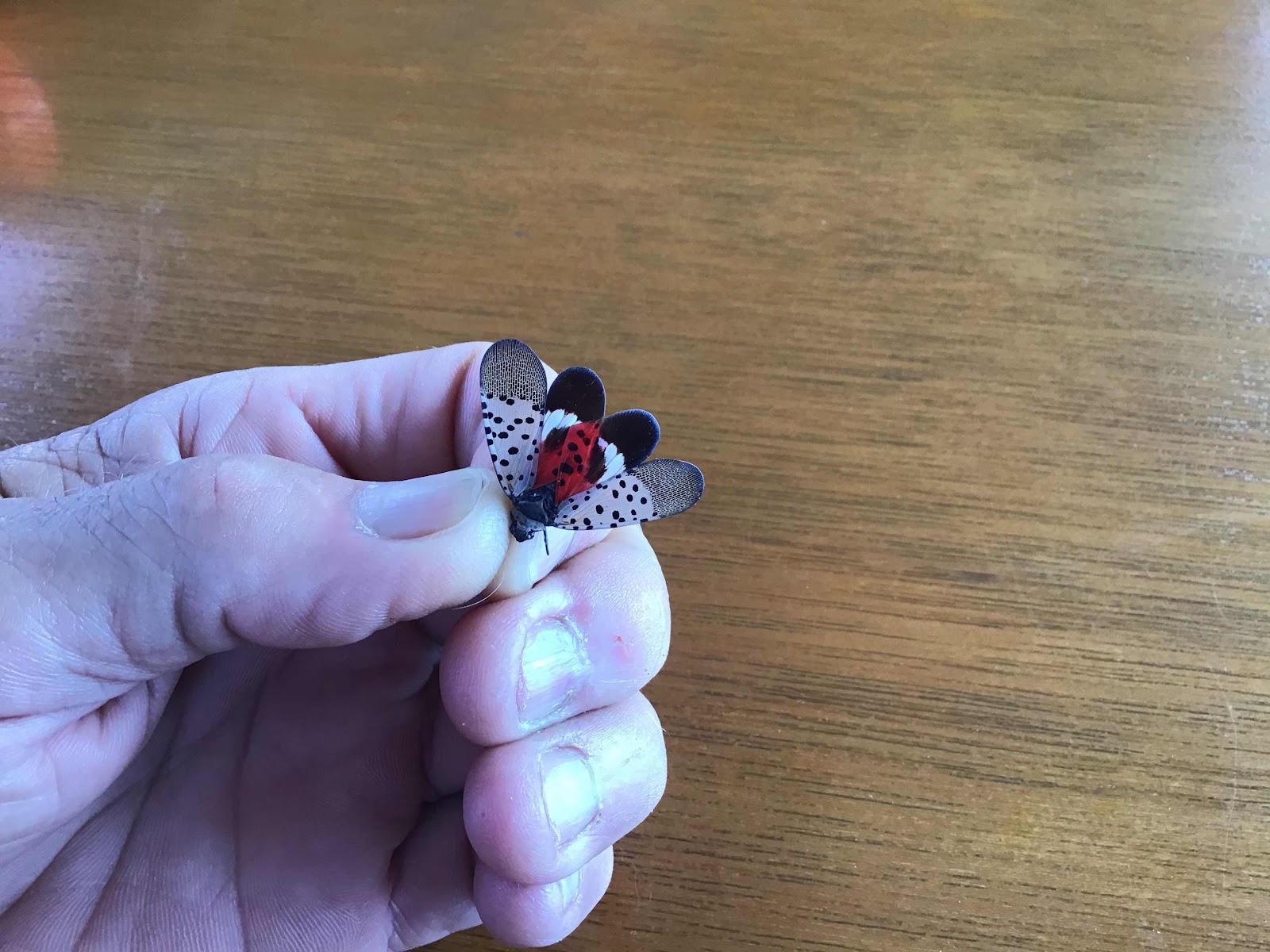Long Island Sound is a nice place to cruise. After close examination of wind and weather predictions, we planned our passage through N.Y. City for September 13. We decided to leave Port Jefferson and stage in Port Washington, where transient boats are welcome...and provisioning is easy!
As we headed toward N.Y. City the skyline came into view, and once I realized the date was September 11 I couldn’t take my eyes off the tall buildings and the planes. From this vantage point, it looked like every plane (coming in for a landing) might strike a building. I had to stop looking...the stress was too much.
And...I had closer objects to keep an eye on. The wind was up, and the sailboats were out...and they were actually sailing!! I love to see sailboats sailing, but it is a rare sight. In the past two years of our travels I would estimate 95% of the sailboats we have seen are using motor power instead of sail power. It was great to see sailing!
While at the helm, the trick I use to see if I am on a collision course with another boat is to check ‘line of sight’. For about 15 minutes before I took this picture I watched the position of this boat relative to my boat. Every time I looked at the boat I could draw an imaginary line (that looks blue to you) that landed in the exact same spot on my boat. This means we are on a collision course. The only difference is that each time the boat looks bigger. Now it is time for me to change my course to give way to this sailboat, and pass behind him/her. Even if this was a power boat I would have to ‘give way’ in this example. The easy way to remember right of way rules is ‘right is right’. The boat on the starboard (right) side has the right of way, but sailboats always have the right of way when they are under sail power.














There were at least six sailboats tacking back and forth in front of my path. I changed course many times on this leg of the trip. It felt like our path was almost as zigzagged as their’s. They do look like they are having a blast!
Port Washington did live up to its welcoming reputation. They have transient mooring balls that are free for the first night, and only $25/ night after the first. They have a launch that will pick you up and take you ashore, and they also provide two dinghy docks. This one happens to be located directly across the street from the grocery store...PERFECT!!!
I don’t know anything about architectural design, but the diversity along New York’s East River is almost funny. I mean...look at the building in the upper left that looks like a Jenga game gone wrong. In New York, nothing is out of place.
Another successful transit of the East River! Passing under the Manhattan Bridge then the Brooklyn Bridge, with the Statue of Liberty is dead ahead.
Liberty Enlightening the World (the statue’s full name)...let’s just think about that! An interesting fact, she would wear a size 879 shoe.
We anchored at Sandy Hook to stage for the next leg of our trip down the New Jersey Coast. While at anchor this beautiful insect landed on our upper deck. Wait a minute, I think I’ve seen a picture of this insect on a ‘most wanted’ poster. I placed a cup over the bug while I searched the internet. Sure enough
The instructions are to kill this insect on sight. Well...I didn’t really have the heart to kill it (plus it’s pretty big so the squish factor is disgusting) so I talked Keith into taking one for the team and dispatching our bug. With the dirty work done I felt good that we helped the environment...however, within an hour 6 more Spotted Lanternflies landed on the boat, and we realized that our attempts to make a difference here were futile. These insects don’t fly very well, and they seem to stay put once they crash land so they are super easy to catch, but I can envision thousands of these bugs clinging to vehicles traveling 70 mph down the highway. They will be everywhere very soon.
Back in Barnegat, and the sky is finally blue! We have not seen very many clear blue days this summer. There seemed to be a constant haze everywhere we traveled. I have read that the west coast fires were contributing to hazy conditions on the east coast.
Barnegat has a very nice walkway and stone jetty for people to enjoy the inlet.
When we were here two years ago we were treated to front row seats to a ‘pilot ocean ditch’ training session, and it looks like the same activity is happening this time. However, the wind picked up and they didn’t practice the helicopter basket lift portion of the exercise...disappointing!
BUT, while anchored in Cape May (a few days later) the Coast Guard did a demonstration in front of the CG Training Station. They dropped a rescue dummy into the water (from our angle we were hoping it was a dummy) then lowered a diver. The diver put the dummy into a basket, which was brought up to the helicopter, then the diver was retrieved by this cable...super COOL to watch!
This is the lighthouse on the southern shore of the mouth of Delaware Bay. After leaving Cape May we traveled south to Rehobeth Beach to visit friends and family. Rehoboth Bay is extremely shallow with no anchoring options, so we stayed at the Indian River Marina. This marina is owned by Delaware State Parks and was a wonderful place to stay if you are visiting on a power boat. This river is not accessible to sailboats due to the 45 ft clearance of the bridge over the inlet. Also be aware that this inlet can be very dicey! We experienced an outgoing tide that met incoming swell and wind, which made our entrance very turbulent. We were making headway of 4.2 knots at full throttle😬
We are currently anchored on the Sassafras River, and spent the day planning/preparing for severe weather. Normally this type of weather threat wouldn’t cause much concern, but our situation isn’t ‘normal’ at the moment. Our start battery died a few days ago, and in order for us to start our engines Keith has to run a jumper from the house bank. In this scenario it would take additional time for us to start our engines if our anchor should start to drag in 50 knot (57.5 mph) winds, which could be dangerous. To reduce the risk of dragging anchor we let out additional anchor chain to achieve a 13:1 scope, which should hold in those winds. We also prepared the jump for the starboard engine (which would be the first to start) and ‘walked through’ our procedures should the anchor start to drag.
Luckily we did not see waterspouts or 50 mph winds today, but the storms moved out just in time for an incredible sunset!




No comments:
Post a Comment